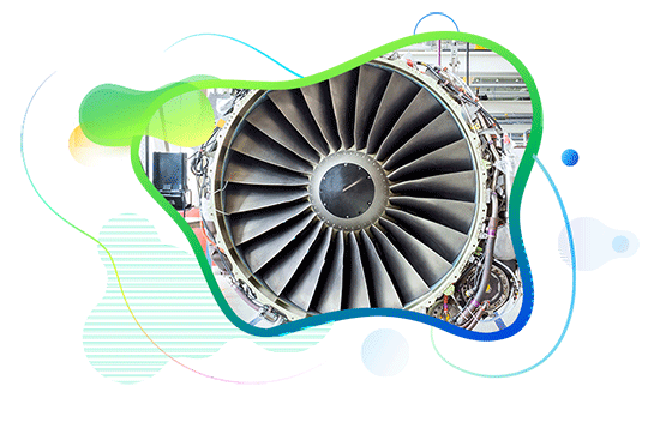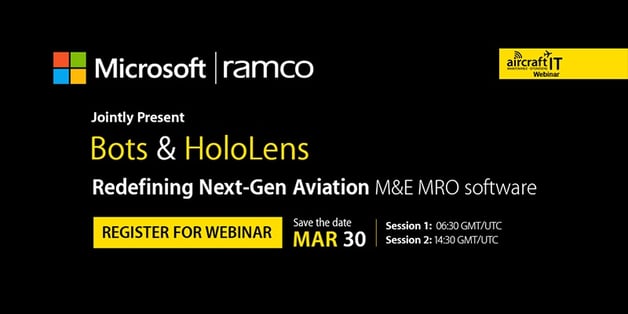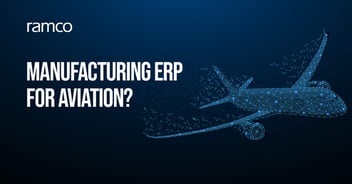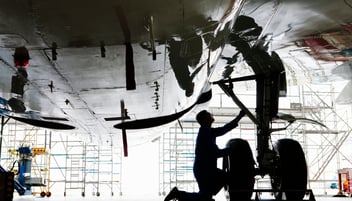
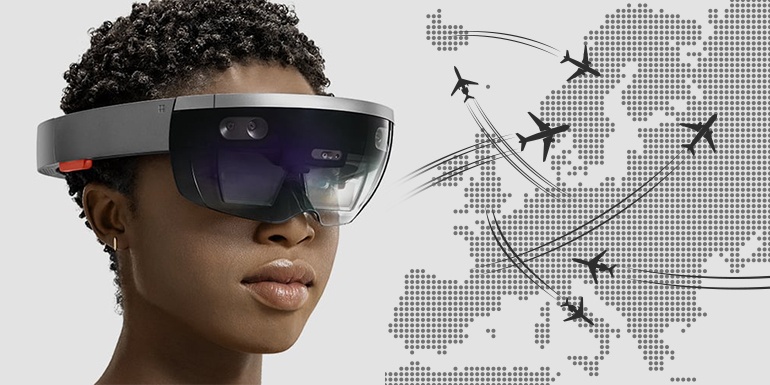
Introducing Exciting Use Cases for the Revolutionary Microsoft® HoloLens
A new era of technological revolution is all set to disrupt the business landscape once again. The brilliantly conceived HoloLens holds promise to transform the business operations by simplifying the routine to complex day-to-day activities through interactive holograms. Enabling comprehensive collaboration and communication, HoloLens allows in-depth exploration of functionalities through specialized sensors and optics. An experience of augmented/mixed reality is delivered through an amalgamated digital interaction.
The MRO Lab Singapore co-funded by AFI KLM E&M and Singapore Government powered by Ramco, has already adopted the innovative concept of HoloLens and is working on customizing it to derive effective solutions and use cases for the Aviation and Logistics industries. Having created two potentially progressive prototypes for MRO, Ramco is well on its way to tap this innovative application of augmented reality across all verticals.
What are the two MRO-specific use cases for HoloLens? Let's take a peek into Ramco's state-of-the-art lab for a quick preview.
Use Case 1: MRO Training
HoloLens provides immense opportunities to deliver in-depth MRO Aviation training for engineers and operators.
For example, 3D models of jet engines can be converted into detailed holograms and projected into HoloLens, resulting in an authentic training experience simulating every scenario they would come across as part of their operational responsibilities.
Every component of the jet engine can be navigated intricately and on selecting a specific component, they can gain access to detailed videos and related visual information about the component.
Similarly, it is also possible to expand extensively from this perspective and digitize an entire aircraft from corresponding 3D models. These holograms are delivered as training apps on HoloLens and they provide a precise and exhaustive view of every aspect of the aircraft from an MRO perspective so operators, mechanics, and engineers can be trained in detail.
Use Case 2: MRO - Remote Support
One of the primary applications of HoloLens is in providing comprehensive remote support from the maintenance control center/Technical services to engineers and mechanics in remote locations. A simple Skype call with the control center, enabled by the HoloLens worn by the user (mechanic/technician), can deliver much-needed assistance in real time.
HoloLens provides the complete visibility of the issue that requires support to the control center through direct feed images and videos from the user’s glasses, and the control center can then use the HoloLens interface to pin specific instructions and guidance as annotations (for example, an inspection checklist) to the user to follow. These annotations are visualized by the HoloLens user as augmented details positioned on the corresponding component location on the HoloLens view. Eventually when the user moves to another view and comes back to the same location, the annotation would still remain visible anchored to the location, and will remain there as a permanent referral point, till the application is reset.
This feature is extremely useful for inspections of aircraft components where specific checklists can be checked through verbal interactions; documents, manuals, and videos related to the specific component can be called on the HoloLens for reference; and Skype-based annotations can be used to interact in real time with the experts in the control center.
With many more exciting use cases on HoloLens well on their way from Ramco's engineering lab, HoloLens is clearly at the brink of a huge technological revolution that celebrates the magic of augmented/mixed reality. Step up your technical capabilities by partnering with Ramco Aviation to discover the unending potential of this transformative innovation.
To further showcase our capabilites on Augmented Reality with Hololens, Ramco Systems and Microsoft are jointly hosting a Webinar on Embracing Bots, Hololens & beyond on 30th March 2017. REGISTER HERE to join us in the webinar.
